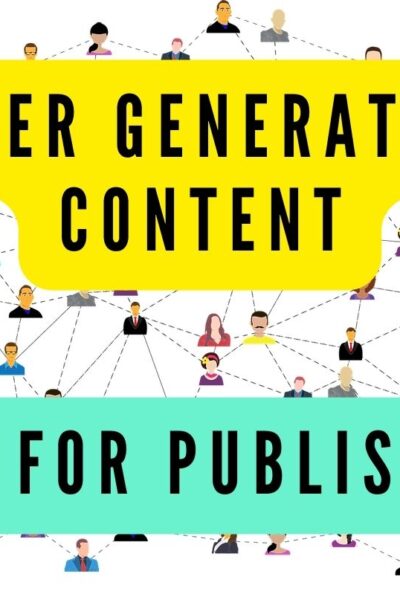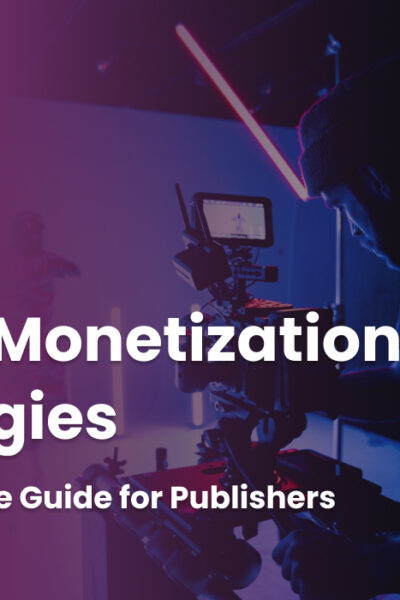With 73% of people now accessing news through “the side door”, according to the Reuters Digital News Report 2021, content syndication is a key growth hacking strategy for publishers in their drive to reach larger and more diverse audiences.
What is content syndication?
Content syndication means republishing content on one or more websites and/or platforms. The good news is that syndicated content isn’t the same as duplicated content. You’re not going to get caught in a limited originality trap – even Google says it’s OK to syndicate content.
Unleash your content on social
Facebook plans to spend at least $1 billion in the news industry over the next three years and has been inking deals with publishers, including some of their harshest critics, to feature content on their Facebook News service. Google has also launched a similar initiative, Google News Showcase.
Publishing your content across the right third-party platform is also a great way to extend its reach, maximise audience engagement and drive traffic back to the original post. Likewise, content syndication can assist with link building – the more platforms you syndicate your content to, the more links you are likely to receive organically, which improve your site’s Google ranking.
Content is syndicated via third-party platforms, such as Google and Facebook, connecting your publication with a wider audience (as it hops from social circle to social circle through the power of likes and shares), grows brand awareness, and drives more subscription revenue by ensuring your content is seen by more people that will appreciate its value and offer you their future loyalty.
It sounds like a no-brainer, and in many ways, it is. But (there’s always a but) third-party platforms are also competing to retain attention and keep users exclusively for as long as possible. They don’t want them to click away.
Sure, you can post a summary or excerpt of your piece on Facebook or LinkedIn and hope it is enticing enough to attract attention away, or you can get more creative with your content syndication strategy.
User-generated enticement
Video content is now the preferred medium for consuming information for most internet users, and its popularity is growing exponentially; this includes its dominance on social media. Reportedly, 78% of people watch videos online each week, with 55% watching daily; the average person will now spend 100 minutes each day watching online. Studies have also shown the average viewer retains 95% of a message when they watch it, as opposed to a mere 10% when reading.
Video is here to stay. But if you really want to grab someone’s attention, reach new audiences, and shepherd traffic back to your website, you need to include user-generated videos in your content.
User-generated videos are enabling publishers, both large and small, niche and mass market, to expand the format of their publishing to uncover new markets and audiences (such as Gen Z and Gen Alpha).
According to a study by Omnicom and Snap Inc, Gen Zs and Millennials have significantly increased their video consumption, focusing on mobile and social media video content. In fact, Gen Zs and Millennials say they now spend over one hour daily watching videos on social media apps alone. Over half (52%) of both Gen Zs and Millennials say this increased viewing is here to stay.
Keep pace with content consumption habits
The key to successful content syndication ensuring your content is created so it looks at home, not just on your website but on third-party platforms where you want to entice new viewers. If you want to tap into another platform’s network, it needs to be with content that aligns with the values and expectations of that platform and its audience.
If there’s one thing we know for sure about social media audiences, it is that they can be a fickle bunch. It can be hard to keep up with content consumption habits that change day-to-day and week-to-week, depending on what’s happening around audiences at any given time. It can also be hard to predict how they will respond to content.
The key to successful content syndication is making sure that what you share is highly relevant, resonant, and engaging if you are to not only attract eyeballs but also cultivate and monetise your content. The fast-paced nature of a user-generated video, as well as its vast breadth, depth and variety, means that publishers can be far more flexible with content syndication and can respond quickly to changes in consumption habits.
A user-generated video enables publishers to gather and share content quickly and to constantly pivot to create highly relevant and contextualised moments based on current audience needs and trends.
Stand out on a crowded feed
Standing out from the crowd and positioning content in such a way that the right people find it is a challenge for publishers both large and small. The web is so big and so noisy. It isn’t logical to expect that all the people you want to reach will read your story just because you published it on your own site.
Visual networks like Instagram and TikTok are on the rise as news sources because, as social media trends have demonstrated time and again, a user-generated video not only grabs attention on crowded newsfeeds but also retains that attention. It creates a connection stronger than any other content, strong enough to pull through to your platform.
Today people already know what they want and where to find it; publishers need to match that intent and give them the content they are looking for.
The vast quantity and variety of user-generated videos, coupled with the constant availability of new videos, offer the opportunity for publishers to get creative, experiment with different formats, and work out what resonates best with audiences on each platform.
Give your content a longer shelf life
Video typically has a longer shelf life than other types of content. Not only does user-generated video content get more engagement than other content types, but it also usually sticks around for longer. This is because video content typically generates more interactions and shares, which means it stays in the social ecosystem for longer, almost like it keeps on syndicating itself!
When it comes to content syndication and user-generated video, the opportunities for publishers are endless. It is literally a marriage made in heaven.









